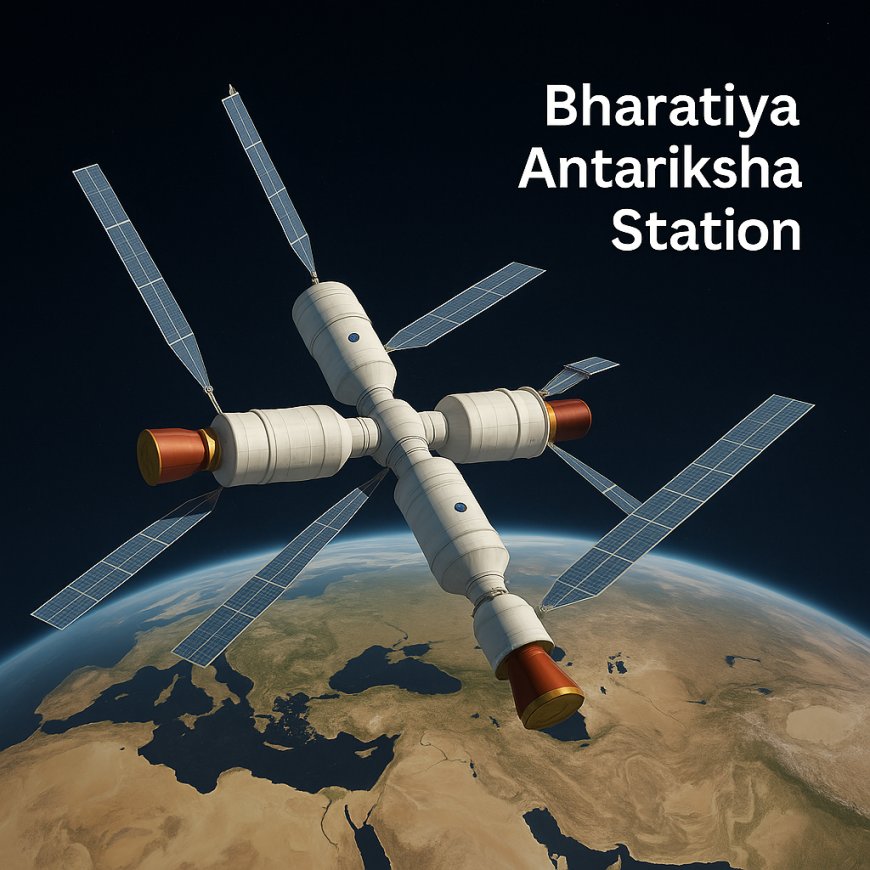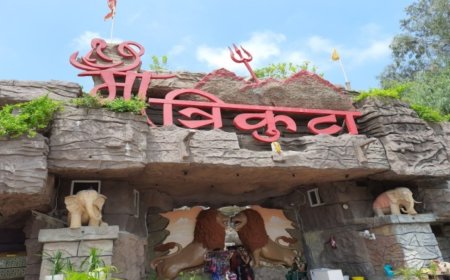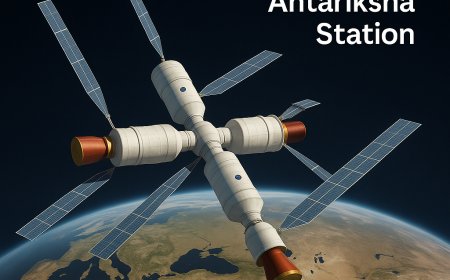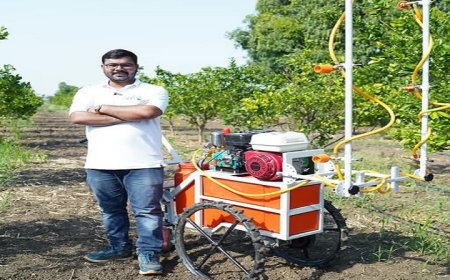ISRO’s Indian Space Station: Everything You Need to Know About the Bharatiya Antariksha Station
Discover everything about ISRO’s upcoming Indian space station—Bharatiya Antariksha Station (BAS). Learn how India plans to build, launch, and operate its own modular space station, its goals, timeline, features, cost, global collaborations, and strategic importance in this detailed guide.

India is reaching for the stars—literally. In a move that reflects its growing ambition in space exploration, the Indian Space Research Organisation (ISRO) has announced plans to build its own space station. This bold project, called the Bharatiya Antariksha Station (BAS), is a game-changer for the country and puts India in the elite group of spacefaring nations with independent space habitats.
If you're curious about what this means for India and the rest of the world, here's a deep dive into everything you need to know about India’s first space station—what it is, why it matters, and how it’s going to work.
What Is the Bharatiya Antariksha Station (BAS)?
The Bharatiya Antariksha Station, or BAS, is a modular space station that ISRO plans to build and launch into Low Earth Orbit (LEO). This orbit is about 400 - 450 kilometers above Earth, where astronauts can live and work for extended periods.
Unlike a single spacecraft, a modular station is made up of several parts (or modules) that are launched separately and connected in space. BAS will include five main sections: a core module, science lab, base module, a common working area, and another support unit. Together, they’ll serve as India’s permanent home in space.
Why Is It a Big Deal?
This is more than just another satellite or mission. BAS is a milestone. Only a handful of countries—the USA (with the ISS), Russia (earlier with Mir), and China (with Tiangong)—have managed to build and operate space stations. With BAS, India joins this prestigious club.
But that’s not all. The station will allow India to:
1. Host astronauts for long-term missions
2. Conduct research in space
3. Collaborate with international space agencies
4. Enhance its defense and satellite systems
5. Boost disaster management from space
In short, it gives India a permanent seat at the table in global space affairs.
Quick Specs and Features
Here’s a quick breakdown of what the Bharatiya Antariksha Station will look like and how it will function:
Mass: Around 52 tonnes
Orbit: Low Earth Orbit (400 - 450 km)
Crew Capacity: 3–4 astronauts long-term, up to 6 short-term
Design: Modular with five main parts
Power Supply: At least four pairs of solar panels
Life Support: Indian-made system to generate oxygen, control humidity, and remove CO₂
Docking Ports: Internationally compatible for global collaborations
In simple terms, it’s a self-sustaining, floating science lab and home for astronauts, built to international standards.
When Will It Be Ready?
Like any ambitious space project, this will take time. Here’s what the current timeline looks like:
December 2025: First uncrewed Gaganyaan mission (with humanoid robot Vyommitra)
Early 2027: First crewed Gaganyaan flight
2028: Launch of BAS’s first module
By 2035: Full station assembly and operation
Before astronauts move in, ISRO will carry out several test missions to ensure everything—from life support systems to docking mechanisms—is working smoothly.
The Role of Gaganyaan
You’ve probably heard of Gaganyaan, India’s first human spaceflight mission. It plays a big role in paving the way for BAS. Think of Gaganyaan as the rehearsal. It will test human spaceflight capabilities, space capsules, and crew systems. The learnings from Gaganyaan will feed directly into how BAS operates.
It’s worth noting that India is developing these technologies indigenously, meaning it's building most of the systems at home rather than relying heavily on other countries.
What Kind of Research Will Happen on BAS?
One of the most exciting parts of BAS is the scientific research it will enable. In the unique environment of space, especially in microgravity, scientists can study things that are impossible to replicate on Earth.
Some of the major research areas include:
Life sciences: How does the human body change in space over time?
Materials science: How do metals and other substances behave in microgravity?
Medicine: Can new drugs or medical techniques be developed in space?
Space technology: Testing new systems and tools in space conditions
These studies won’t just help space missions—they could lead to real-world breakthroughs back on Earth.
How Much Will It Cost?
The BAS project is part of the larger Gaganyaan program, which has a total budget of ₹20,193 crore.
This covers:
1. Technology development
2. Launch vehicles
3. Uncrewed and crewed missions
4. Construction of the space station
While this sounds like a huge sum, it’s actually very cost-effective when compared to the budgets of other nations. ISRO is well known for doing more with less, and BAS is no exception.
Opportunities for Global Collaboration
BAS isn’t just an Indian project—it’s a potential platform for international cooperation. With internationally compatible docking ports, other countries’ spacecraft will be able to dock with BAS. This opens up the door for:
1. Joint research missions
2. Exchange of astronauts
3. Shared data and discoveries
India has already partnered with agencies like NASA, ESA, and JAXA in other missions, and BAS could take those partnerships to the next level.
Strategic and National Importance
Beyond science, BAS has major strategic value. With its network of 57 operational satellites, India already uses space tech for weather forecasting, communication, and surveillance. BAS will strengthen this network by:
1. Improving real-time data collection
2. Supporting border and maritime monitoring
3. Enhancing disaster management systems
It’s not just about what happens in space—it’s about what that knowledge can do for people on Earth.
Looking Ahead: Vision 2047
BAS is also part of India’s larger vision for its 100th year of independence in 2047. This includes plans to:
1. Send the first Indian astronaut to the Moon by 2040
2. Develop more advanced space infrastructure
3. Expand India’s presence in both Earth orbit and deep space
So while BAS is a major step, it’s just one part of a much bigger journey.
Final Thoughts
The Bharatiya Antariksha Station is not just a space station—it’s a symbol of what India is capable of. It represents science, ambition, innovation, and a leap into the future. With the launch of BAS, India isn’t just participating in the space race—it’s leading in its own way.
Whether you’re a student dreaming of becoming an astronaut or just someone fascinated by what’s out there, keep an eye on ISRO. The next decade is going to be extraordinary.
What's Your Reaction?
 Like
0
Like
0
 Dislike
0
Dislike
0
 Love
0
Love
0
 Funny
0
Funny
0
 Angry
0
Angry
0
 Sad
0
Sad
0
 Wow
0
Wow
0


























































































